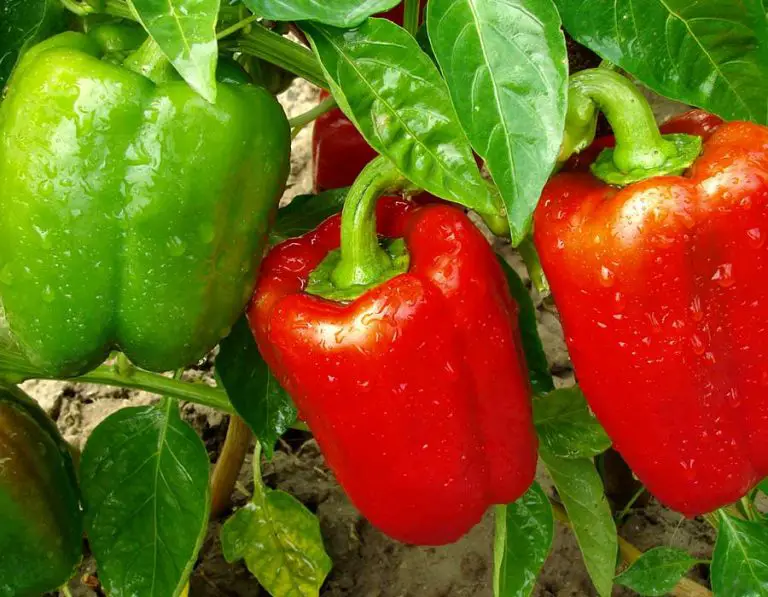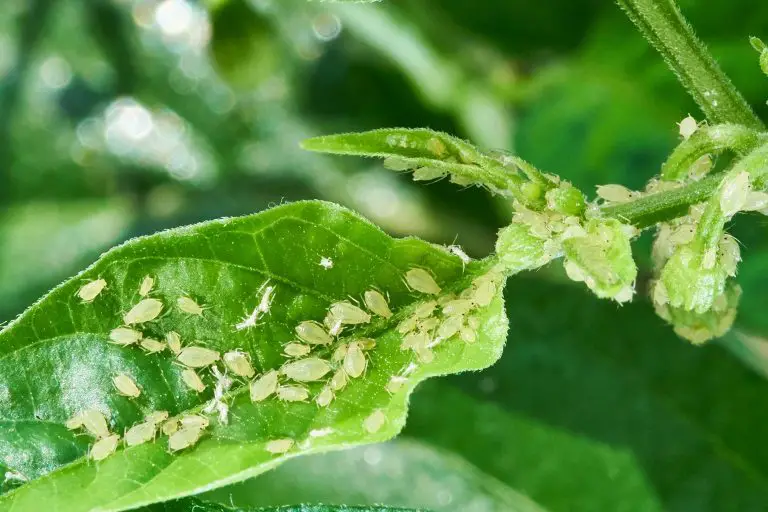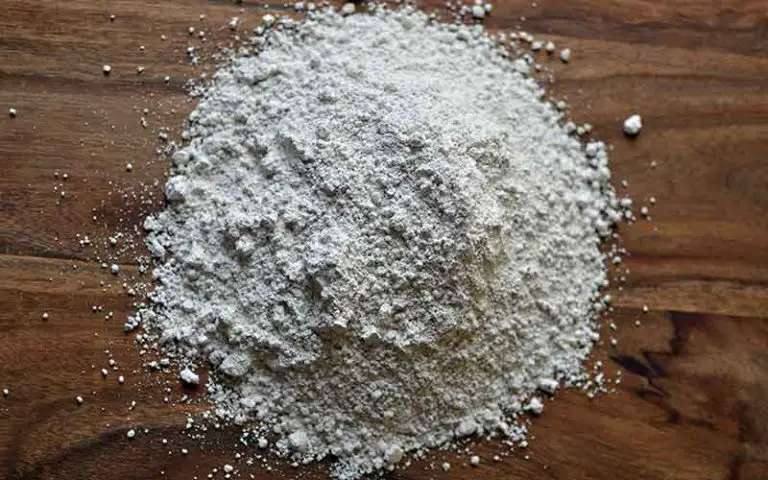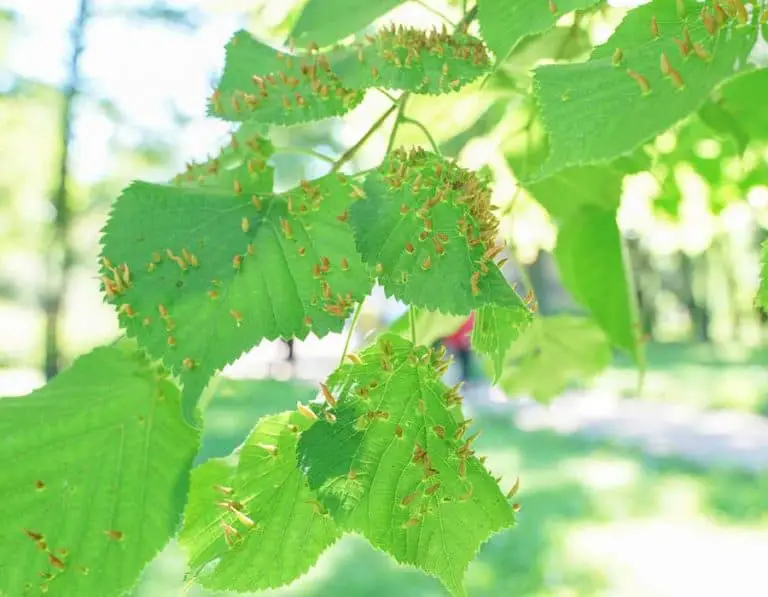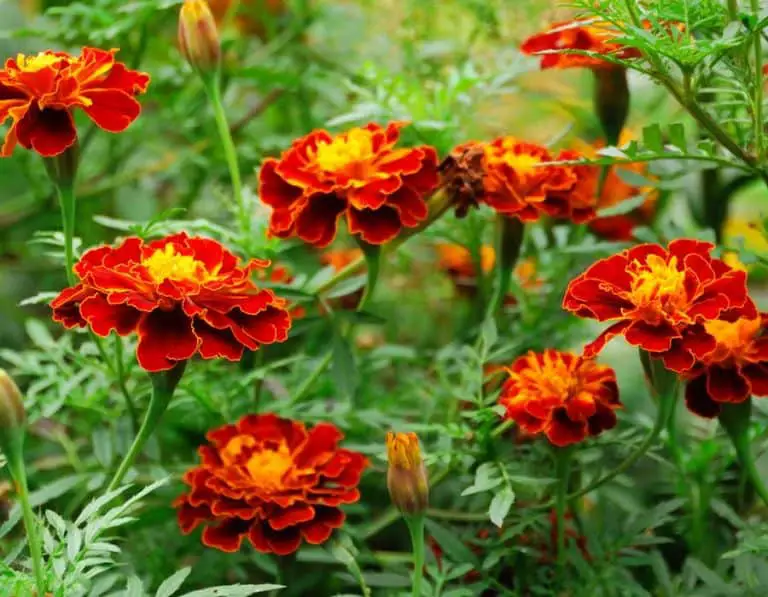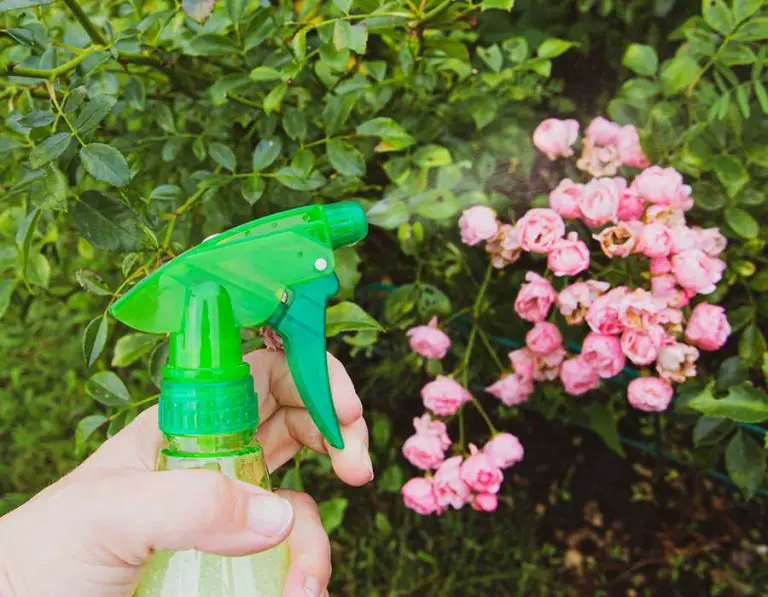How to Control Aphids on Indoor Houseplants
Aphids are a common pest that you’ll find on the outdoor plants in your garden. By crawling, flying, or being introduced through infested plants, these invasive creatures can also make their way into your home to take over your indoor houseplants too.
There are several methods you can use to control aphids on indoor houseplants. Natural options include washing them off with water, creating a DIY aphid repellant spray, or killing them with neem oil or rubbing alcohol. For severe infestations, you can treat your houseplants with a chemical pesticide to kill the aphids quickly.
What Are Aphids?
Aphids are tiny soft-bodied bugs that are a common pest to outdoor and indoor plants. They are found on the underside of leaves, where they live and feed on the foliage.
Aphids can multiply very quickly into large populations that take over plants. The resulting damage that a large population of aphids does to a plant can be devastating; however, as these insects move slowly, aphid control is relatively easy on indoor plants.
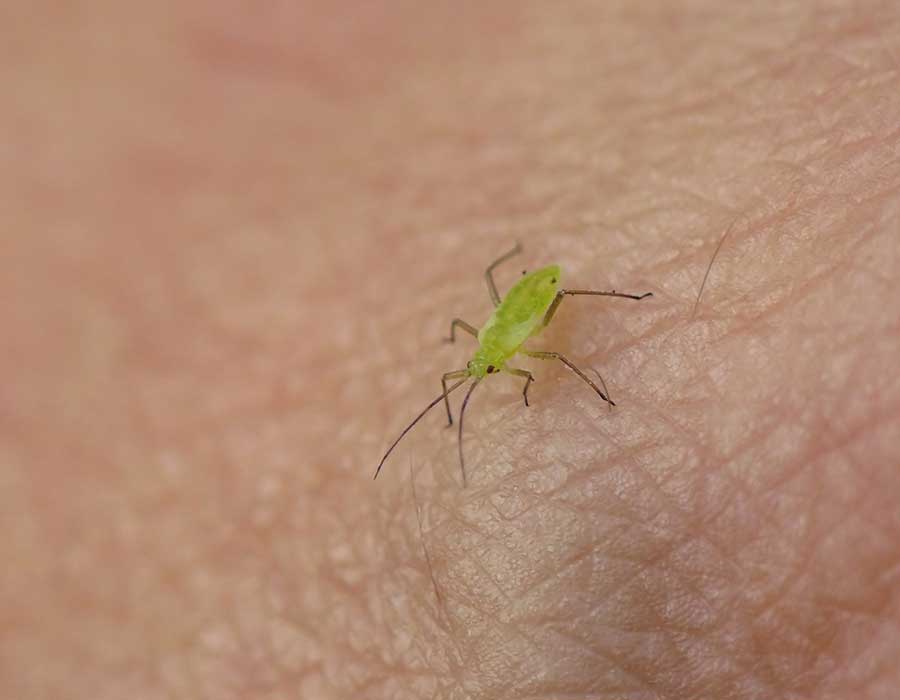
What Do Aphids Look Like?
Aphids have tiny oval-shaped bodies, so small that they are almost undetectable by the naked eye. Adult aphids are typically green, but they can also be just about any other color, including white, grey, black, brown, yellow, red, and pink.
Adult aphids are most often wingless, however, most species are able to develop a winged form. This is rare and only occurs when populations are extremely high to allow them to travel to an alternative food source.
How Do Aphids Damage Plants?
As is the case with most indoor houseplant pests, aphids damage plants by feeding on their foliage.
Aphids are particularly drawn to new growth and buds on plants. When the aphids multiply, they like to cluster on leaves, buds, and flowers on your indoor houseplants. They then feed voraciously on the plant by sucking up sap from these parts of the plant.
As the aphids feed on the sap, they release a sticky substance called honeydew. You may notice this residue on or around your houseplants before you notice the actual bugs. Their feeding process can cause extensive damage to your houseplants, and may even kill a plant if populations are left untreated.
What Are the Signs of Aphid Damage on Indoor Houseplants?
While aphids prefer new growth, they can cause damage to any part of the plant, including stems, leaves, buds, flowers, fruits, and roots. As aphids are so small, it’s likely that you won’t be able to spot an infestation by eye before it’s too late.
The most typical signs of an aphid infestation are:
- Lots of small bugs visible on the underside of leaves
- Leaves that are deformed, curled, or turning yellow
- Flowers that are deformed
- Stunted foliage growth
- Leaf or bud drop
- Leaves and stems covered in sticky honeydew
- Plant suffering from sooty mold, a disease that causes branches and leaves to turn black
It’s important to act fast as soon as you notice aphids on your houseplants. These pests multiply extremely quickly and will spread around your houseplants if they aren’t eliminated as soon as possible.
How Do Aphids Get On Indoor Plants?
Being exposed to nature, it’s understandable when your outdoor plants suffer from infestations of pests like aphids. If you’ve found aphids on your indoor houseplants, however, you may be wondering how they got there.

Aphids can be introduced to your indoor houseplants in a few different ways:
Traveling on Plants
Aphids can travel indoors on plant foliage, for instance, if you bring in a plant that spent a season outdoors, or if you bring in fresh flowers or produce from your garden. Also, they can travel on new houseplants that you purchase from the garden store or nursery.
Crawling or Flying Through Windows
Aphids can easily crawl or fly through your windows undetected due to their tiny size. This is more likely in the summer when you keep your windows open for long periods of time.
Brought in with Ants
Having an infestation of aphids may actually indicate an infestation of another common pest, ants. Ants like to feed on the honeydew that aphids produce, so they’ll bring in aphids to your houseplants and support their populations. Therefore, if you have ants in your home, this may be attracting aphids to your indoor houseplants.
How to Get Rid of Aphids on Indoor Houseplants
There are a few different methods you can use to get rid of aphids on indoor houseplants. Solutions include making your own DIY aphid insecticide, using neem oil or rubbing alcohol, or setting up aphid traps.
Washing Aphids Off Plant Foliage
For lighter infestations, you can simply wipe away the aphids using your fingers or a cotton swab. You may want to wear some gloves for this if you’re squeamish.
If the infestation is a bit more extensive, or your plant has particularly delicate foliage, you can instead attempt to wash away the aphids using water. Fill a bucket with clean, room-temperature water. Then, turn your houseplant upside down and dip its foliage into the water to dislodge the aphids.
Making Your Own DIY Aphid Repellant Spray
You can treat aphids on indoor houseplants by creating a DIY repellant spray from water and soap. Commercially available insecticidal soap is designed specifically for this purpose; however, you can easily make your own spray from regular liquid soap to kill aphids on your houseplants.
How to Make DIY Aphid Repellant Spray
Mix 1 teaspoon of organic mild liquid soap with 1 liter of room-temperature water in a clean spray bottle. Spray the solution directly onto all of the aphids you can see. You may need to repeat applications of this spray on a regular basis before it has full effect to get rid of the aphids.
This spray will kill the aphids on contact without causing any damage to the plant; however, it’s best to err on the side of caution with any homemade remedies by testing it on one leaf before using it on the whole plant.
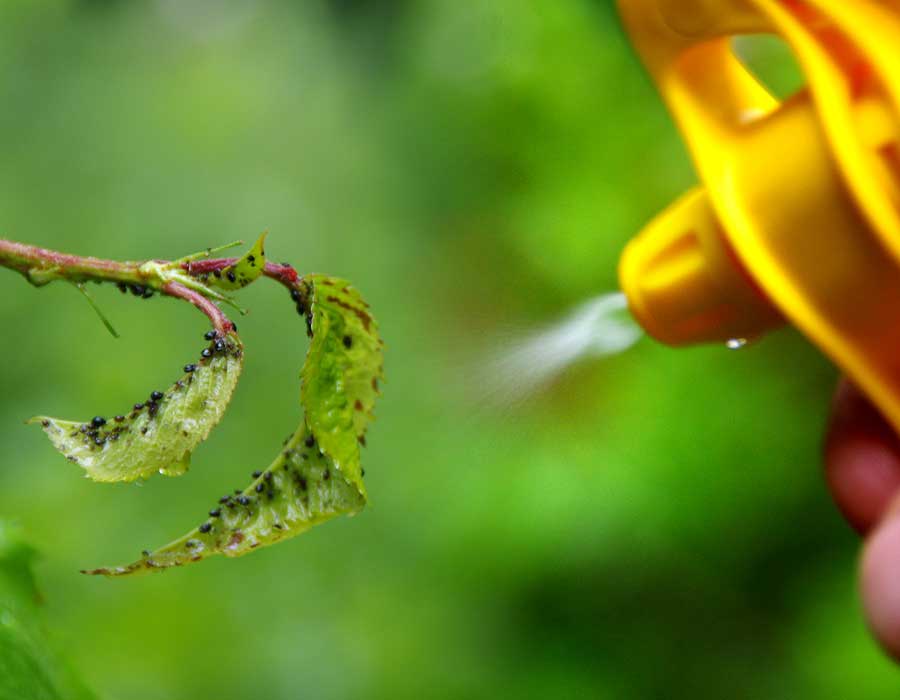
Killing Aphids with Neem Oil
Another substance you can use to kill aphids is neem oil. This is a natural pesticide derived from neem trees. An additional benefit of neem oil is that it also helps to repel aphids from returning to your plants after you eliminate them.
You can purchase neem oil as a concentrated solution for a relatively cheap price. If you purchase the concentrate, you’ll need to combine it with liquid soap to help the oil mix with the water.
Killing Aphids with Rubbing Alcohol
Rubbing alcohol is another natural method to get rid of aphids on indoor houseplants. When applied directly to the aphids, the alcohol dries them out, ultimately causing them to die.
To carry out this method, you simply take a cotton swab and dip it in rubbing alcohol, before using the swab to apply the alcohol directly onto the insects. You could alternatively make a solution of 1 part water to 1 part rubbing alcohol to create a DIY pesticide spray; again, you should test your spray on a single leaf before applying it all over the plant.
Trapping Aphids with Sticky Traps
You can also use sticky traps to control aphid populations in indoor houseplants. This method is most effective on winged aphids that are flying around your plants and evading any topical treatments you’ve added to your plants directly.
All you need to do is place the sticky traps around your houseplants, swapping them out for fresh traps regularly. Take note that sticky traps will catch other insects flying around your plants, such as fungus gnats.
Using a Chemical Spray
The last option you have to kill aphids on indoor houseplants is to use a chemical pesticide. You should only opt for a chemical means of control if you have exhausted every other option or if your infestation is particularly severe.
Look for a chemical aphid killer that contains ingredients like pyrtherins, pyrethroids, or imidaclopirid. The killers with the lowest toxicity are those containing pyrtherin.
How to Treat Aphids on Houseplants (Step-by-Step)
In this section, we provide a step-by-step method on how to go about treating an aphid infestation on your houseplants.
1. Look for Signs of Aphids
If you’ve only noticed the signs of aphid damage on your houseplants, you should first determine whether these are the pests that you’re dealing with. This ensures that you’re applying the correct treatment to get your houseplants back into good health.
Inspect your houseplants, focussing on the underside of leaves and the tips of stems. Even though aphids are hard to spot, they will be noticeable in the case of a full infestation. Look for other evidence of aphid activity such as tiny white shedded-skins and honeydew on or around the plant.
2. Isolate Affected Plants
If your investigation reveals that you are dealing with an aphid infestation, you need to take action quickly. First, isolate any of the plants infested with aphids, placing them away from other unaffected plants nearby.
3. Treat Plants
With your plants isolated, you can start treating them to get rid of the aphids. Use the natural methods of aphid control listed in the previous section, such as washing them off with soapy water, making your own DIY aphid killer spray, or killing them with neem oil or rubbing alcohol. To eliminate flying aphids, you can set up sticky traps around the plants.
If the infestation is particularly severe, you can use a chemical pesticide to kill the aphids. As we’ve explained, it’s best that you only use chemical treatments as a last resort. Look for a product containing pyrtherins, pyrethroids, or imidaclopirid; pyrethrin-based killer has the lowest relative toxicity.
4. Cut Off Foliage
For extremely severe infestations or to avoid using any treatments on your houseplant, you can simply cut away the infested parts of the foliage. Put on some gardening gloves and use a pair of secateurs to cut off leaves taken over by aphids. Take care when cutting so as to not cause damage to the nearby stems and healthy leaves.
Alternatively, you could take cuttings from the healthy parts of the plant before disposing of the orginal plant altogether. Choosing the healthiest unaffected foliage, take cuttings with your secateurs. Wash the leaves to remove any remaining aphids before propagating them into new growth.
5. Keep Monitoring Houseplants
After treating your houseplants, keep a close eye on them to catch any potential infestations. If you used neem oil, this will provide your plants with some long-term aphid repellant properties; however, other natural methods only treat the problem. A new infestation of aphids can quickly take over your houseplants again if you don’t keep monitoring them for sings of these pests.
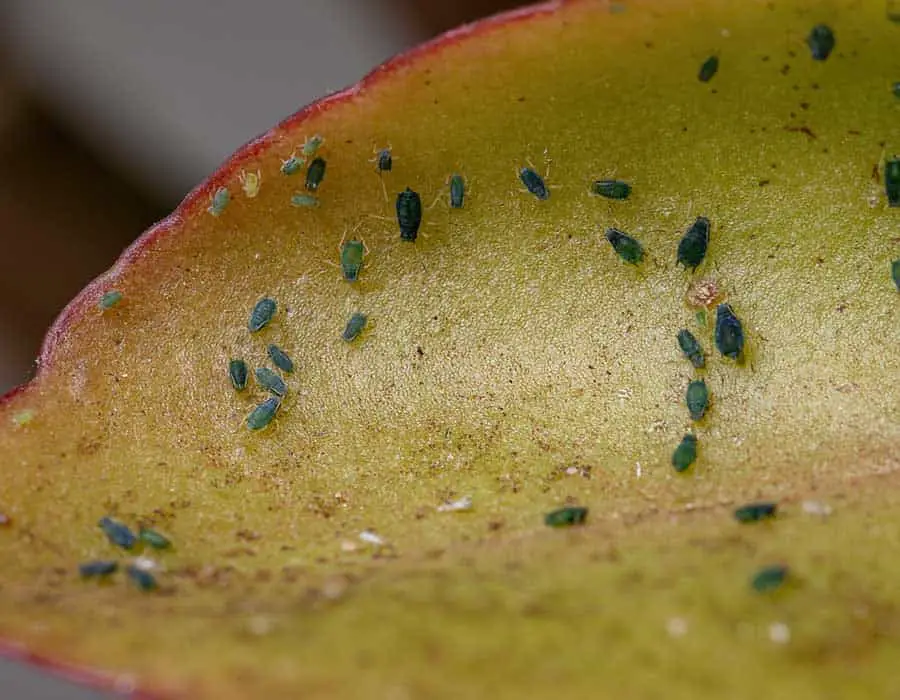
How to Prevent Aphids From Reinfesting Indoor Houseplants
Follow these tips to prevent aphids from reinfesting your houseplants after treatment.
Isolate New Plants
When you purchase new plants from the garden store, isolate them away from your current houseplants for at least 30 days. This is to prevent a full infestation arising from aphids that are brought in on the new plants. Keep the new houseplants in a different room to your existing plants.
Use Slow Release, Low Nitrogen Fertilizers
When fertilizing your houseplants, you should use a slow-release fertilizer with a moderate to low nitrogen content. Nitrogen is the nutrient that plants use to grow new foliage and tissues; in high quantities, it can cause an abundance of new growth on the plant.
As we’ve explained, aphids are particularly drawn to this new growth on your houseplants. They will reproduce rapidly under these conditions, causing a full blown infestation in no time. Therefore, you should avoid using high-nitrogen fertilizers on your plants as a way to reduce the likelihood of a reinfestation.
Keep Tools Sterile
When working on your houseplants, such as repotting or pruning them, you may inadvertently spread aphids from plant to plant. Make sure to wash your hands and sterilize your tools when you finish working on one plant before moving onto another.

